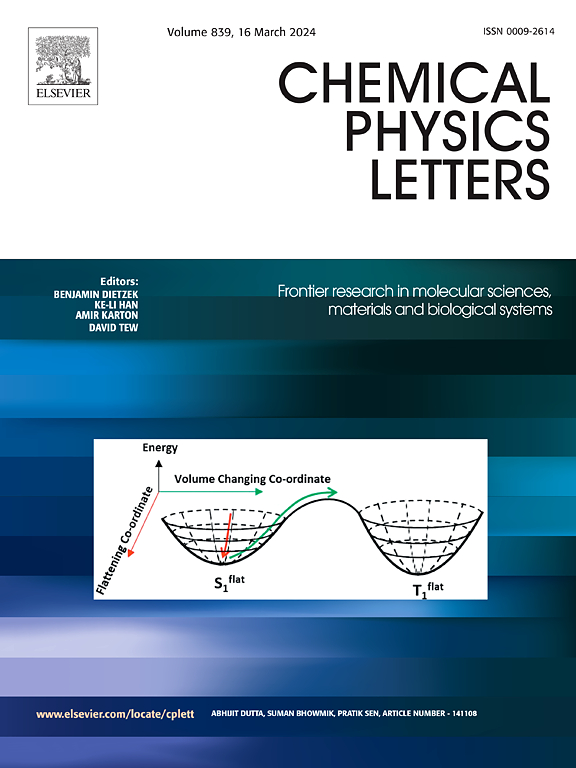探讨空位缺陷对2H-ZSiCNR-1H纳米带自旋和热电性能的影响
IF 2.8
3区 化学
Q3 CHEMISTRY, PHYSICAL
引用次数: 0
摘要
本文研究了具有空位缺陷的不对称氢化之字形碳化硅纳米带(2H-ZSiCNR-1H)铁磁相中自旋输运、热导率和塞贝克系数的影响。利用密度泛函理论结合landauer - b本文章由计算机程序翻译,如有差异,请以英文原文为准。

Exploring the role of vacancy defects in the spin and thermoelectric properties of 2H-ZSiCNR-1H nanoribbons
This paper presents a comprehensive investigation into the effects of spin transport, thermal conductivity, and the Seebeck coefficient in the ferromagnetic phase of asymmetrically hydrogenated zigzag silicon carbide nanoribbons (2H-ZSiCNR-1H) with vacancy defects. Using density functional theory combined with the Landauer–Büttiker formalism, we explore how vacancy defects – ranging from the edge to the center of the nanoribbon – affect the spin-semiconducting and thermoelectric behaviors. While the spin-conserved gap and band structure for spin-up and spin-down electrons and holes exhibit significant differences, this asymmetry in the band structures and, ultimately, the transmission coefficient facilitates the generation of distinct thermal currents and spin-Seebeck coefficients (SSC) in these asymmetrically hydrogenated nanostructures. Furthermore, the presence and spatial arrangement of vacancy defects within the nanoribbon significantly impact the band structure, resulting in variations in spin current values, threshold temperatures, and SSC. In certain configurations, these defects can even induce negative differential thermoelectric resistance. Notably, the maximum SSC for defected structures reaches 1.6 mV/K for spin-up electrons, underscoring the potential of defect engineering in optimizing the thermoelectric and spintronic properties of 2H-ZSiCNR-1H nanoribbons for advanced applications.
求助全文
通过发布文献求助,成功后即可免费获取论文全文。
去求助
来源期刊

Chemical Physics Letters
化学-物理:原子、分子和化学物理
CiteScore
5.70
自引率
3.60%
发文量
798
审稿时长
33 days
期刊介绍:
Chemical Physics Letters has an open access mirror journal, Chemical Physics Letters: X, sharing the same aims and scope, editorial team, submission system and rigorous peer review.
Chemical Physics Letters publishes brief reports on molecules, interfaces, condensed phases, nanomaterials and nanostructures, polymers, biomolecular systems, and energy conversion and storage.
Criteria for publication are quality, urgency and impact. Further, experimental results reported in the journal have direct relevance for theory, and theoretical developments or non-routine computations relate directly to experiment. Manuscripts must satisfy these criteria and should not be minor extensions of previous work.
 求助内容:
求助内容: 应助结果提醒方式:
应助结果提醒方式:


